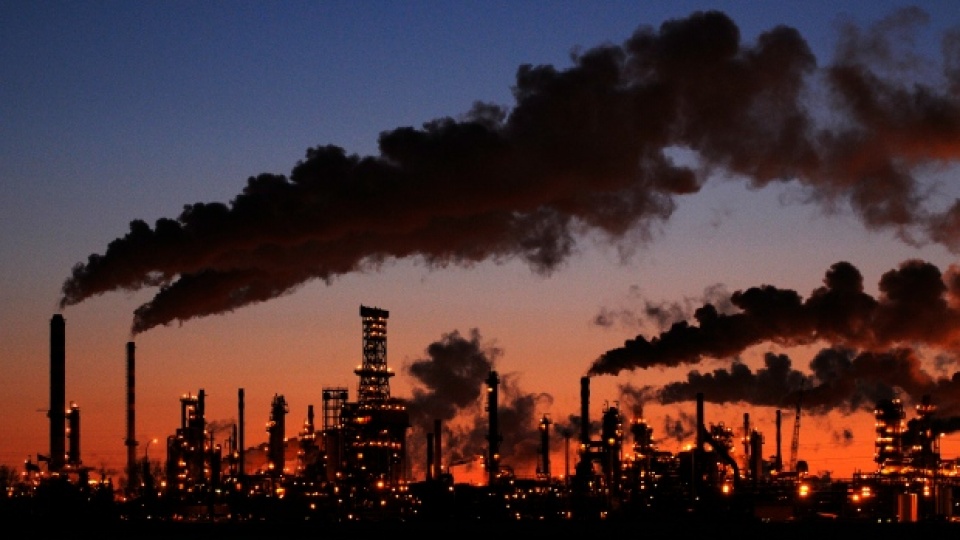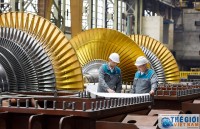
Revitalising Vietnam’s power plants, keeping an eye on emissions
Latest
| TIN LIÊN QUAN | |
| Canada supports Vietnam to cope with climate change | |
| Vietnam commits to Paris agreement on climate change | |
The energy industry paradigm shift
In today’s world, there is an increase in demand for reliable, affordable, clean, and sustainable energy in countries like Vietnam. Due to growing demand, the power industry is expected to expand significantly over the next decade. According to the International Energy Agency’s (IEA) World Energy Outlook 2016, in 2014, 41 percent of global electricity generation came from coal-fired power plants, and 22 percent came from gas-fired power plants. Both coal- and gas-fired electricity generations are expected to increase over the next decade in both IEA’s Current Policies and New Policies scenarios.
As coal is more carbon-intensive than other sources, in 2014, it accounted for 73 percent of the electric sector’s carbon-dioxide (CO2) emissions. Coal-fired power is forecast to remain the second-largest energy source by 2030, thus, coal will remain an important component in the world as well as in Vietnam’s energy mix over the next 10 years. There will be more coal-fired power plants to be developed in Vietnam, while the country works on the investment capital pool to embrace the solar, wind, and nuclear options.
 |
| Illustrative photo. (Photo: Reuters) |
In a carbon-constrained world, energy sources such as natural gas, highly-efficient greenfield coal, renewable energy, hydropower, and nuclear power are becoming more important in helping to address global energy security needs in the long run. However, the pressure is also on utilities to revisit priority and importance to keep their existing power generation assets at optimal performance levels to increase the level of efficiency of their aging power plants.
At the end of 2015, Vietnam joined the 21st Conference of the Parties to the United Nations Framework Convention on Climate Change (COP21) and committed to cutting total greenhouse gas emissions by 8 percent by 2030. This poses challenges to utilities in striking the right balance between a need to increase coal-fired power plants while staying committed to the COP21 pledge.
When the hardware and software solution ‘combo’ matters
According to a research carried out by GE, the average global efficiency of coal plants can be improved from 34 to 37.4 percent (2.5 percent through hardware improvements and 0.9 percent more through software solutions and data analytics), while the average global gas efficiency of gas plants can be improved from 39.4 to 42.7 percent (1.8 percent through hardware improvements and 1.5 percent more efficient through software solutions and analytics). Vietnam appeared as one of the top 20 countries with potential for coal upgrades (both total hardware and digital upgrades) which will result in an increase in efficiency by 2.8 percent.
On the other hand, the same study also revealed that annual CO2 emissions from coal and gas plants can be reduced by 7 and 8 percent respectively, the equivalent of more than 642,000 cars taken off the road.
As one of the world’s leaders in power solutions, GE established the Powering Efficiency Center of Excellence in July 2015. It aims to bring together cross-energy business experts to create and apply a total plant solution approach built on technologies, digital improvements and expertise that now spans all major plant assets and more than 90-plus power generation brands to boost efficiency and dramatically reduce the emissions of existing coal-fired power plants.
Take an example of their boiler upgrade solutions, which are the backbone of steam plant efficiency enhancements. They can tap into maintenance and repair capabilities to drive better performance of boilers, pulverizers, air pollution control systems, ash handling systems, and auxiliary equipment, all leading to a smaller emissions footprint. GE’s AzStar 888 boiler tube protection technology, for example, helps prevent leaks that would require outage time, while also reducing fuel costs by as much as 20 percent.
Decarbonization solutions range from an HRSG CO catalyst upgrade which can reduce more than 80 percent of CO2 to implementing upgrades to a gas turbine Dry Low NOx (DLN) combustion solution which can lower emissions by up to 40 percent. We have also seen recent examples of a gas turbine upgrade that increase operational reliability by extending maintenance intervals out to as much as 48,000 hours.
 |
| Illustrative photo. (Source: esglobal.com) |
Leveraging the power of big data for better predictability, GE’s Asset Performance digital solutions allow plant owners to analyze operational data to identify potential issues – and the required solutions – before they occur. Asset Performance Management (APM) features 24/7 monitoring of plant equipment, offering maintenance recommendations and helping customers avoid unplanned downtime – these technologies are expected to save GE’s customers more than 1 billion USD over the next 10 years.
In addition, as part of the Operations Optimization (OO) solutions, GE’s software can also help improve boiler efficiency; it can improve the heat rate by 0.5 to 1.5 percent, and reduce NOx by 10-15 percent through an integrated optimization of the combustion and soot cleaning process. The Coal Analyzer enhances plant performance by tuning combustion and exhaust management processes based on coal properties – this can reduce fuel consumption by 4,400 tonnes of coal per year with the same megawatt output in a single steam power plant.
In general, these solutions bring about plenty of benefits, such as controlling various emission types, enhancing the efficiency of upgraded machinery and equipment, and reducing fuel consumption.
Revitalizing regional power
We have seen recent examples of power plant upgrades in the Asia Pacific region which bring about fuel consumption reduction, an improvement in reliability, and the lowering of emissions.
Japan is now home to the world’s first GE 9EMax turbine upgrade, which is now operational at one of GE’s customer’s power plant. The 9EMax upgrade will increase output, improve efficiency from 47.2 percent to 51.4 percent, and reduce emissions. 9EMax resets the life on a 32-year-old 9E gas turbine and extends maintenance intervals to up to 32,000 hours (from 12,000 hours) – equivalent to approximately four years of typical plant operation.
In Indonesia, the installation of GE’s 9E.03 gas turbine Advanced Gas Path (AGP) solution to existing turbines increases the net capacity to 106.8 megawatts (MW) from 90.5MW previously during the day; at night, net capacity is now 110MW, a 19.5MW improvement from before.
The AGP solution also maximizes turbine performance to reduce fuel consumption and improve heat rate by 10.54 percent. The upgrade also includes implementation of GE’s OpFlex analysis software that enables better control of turbines – in particular, the capability to adjust power generation capacity faster when energy demand levels change.
GE’s Power Services have supported more than 2,800 customers worldwide, with an installed base of 28,000 assets, seven regional teams, nine product lines, nearly 1,600 gigawatts of installed power generation capacity, nearly 150 million hours of operating data, and 230 years of collective experience in solving the industry’s biggest challenges.
“We are excited about various possible solutions we can offer to customers in Vietnam for flexibility. They need to maximize performance and minimize cost over the lifetime of their plants with our long heritage of experience in engineering and innovation,” said Jim Vono, general manager of GE’s Power Services in the Asia Pacific region.
“We hope to play a role in contributing to revitalizing Vietnam’s power industry to be one of the most efficient and sustainable in the region, significantly supporting Vietnam’s energy and development needs,” he said.
 | Conference to talk Mekong Delta sustainable development model A conference on shaping the shift to sustainable development model adaptive to climate change in the Mekong Delta will take place in Can Tho city ... |
 | Hi-tech agriculture: a solution and a challenge Vietnam has become known for its remarkable feat in becoming an agricultural powerhouse in a relatively short time, but it seems that the benefits accrued ... |
 | Power Machines in Vietnam: Half a Century of Cooperation Cooperation between Power Machines, a leading company in the Russian power engineering and the Republic of Vietnam began more than half a century ago, with ... |

















